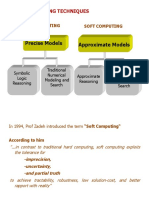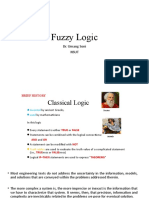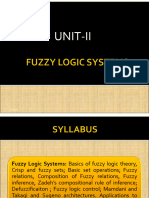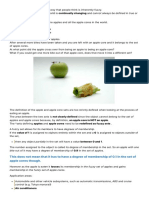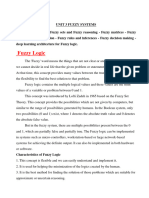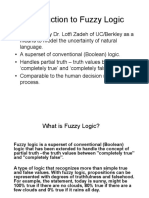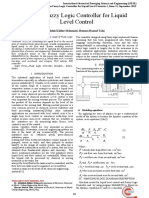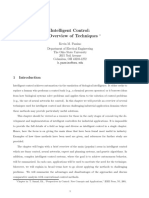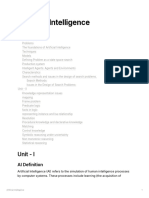0% found this document useful (0 votes)
68 views30 pagesUnit III Soft Computing
This document provides an introduction and overview of fuzzy logic and fuzzy sets. It discusses:
1) Fuzzy logic can effectively handle uncertainty that arises from vagueness, imprecision, or partial information, unlike probability theory which applies only to random processes.
2) Fuzzy set theory, proposed by Lotfi Zadeh in 1965, allows for graded membership in sets rather than crisp binary membership. Values range from 0 to 1 to indicate the degree of membership.
3) Fuzzy logic uses linguistic variables and membership functions to model imprecise concepts like "tallness" that have unclear boundaries and degrees of applicability rather than crisp definitions. Membership functions assign truth values between 0 and 1 to indicate
Uploaded by
Anas SiddiquiCopyright
© © All Rights Reserved
We take content rights seriously. If you suspect this is your content, claim it here.
Available Formats
Download as PDF, TXT or read online on Scribd
0% found this document useful (0 votes)
68 views30 pagesUnit III Soft Computing
This document provides an introduction and overview of fuzzy logic and fuzzy sets. It discusses:
1) Fuzzy logic can effectively handle uncertainty that arises from vagueness, imprecision, or partial information, unlike probability theory which applies only to random processes.
2) Fuzzy set theory, proposed by Lotfi Zadeh in 1965, allows for graded membership in sets rather than crisp binary membership. Values range from 0 to 1 to indicate the degree of membership.
3) Fuzzy logic uses linguistic variables and membership functions to model imprecise concepts like "tallness" that have unclear boundaries and degrees of applicability rather than crisp definitions. Membership functions assign truth values between 0 and 1 to indicate
Uploaded by
Anas SiddiquiCopyright
© © All Rights Reserved
We take content rights seriously. If you suspect this is your content, claim it here.
Available Formats
Download as PDF, TXT or read online on Scribd
/ 30



